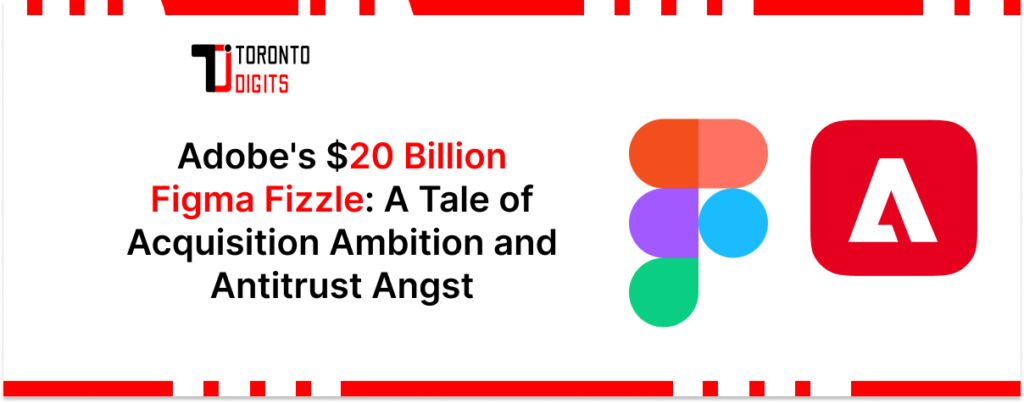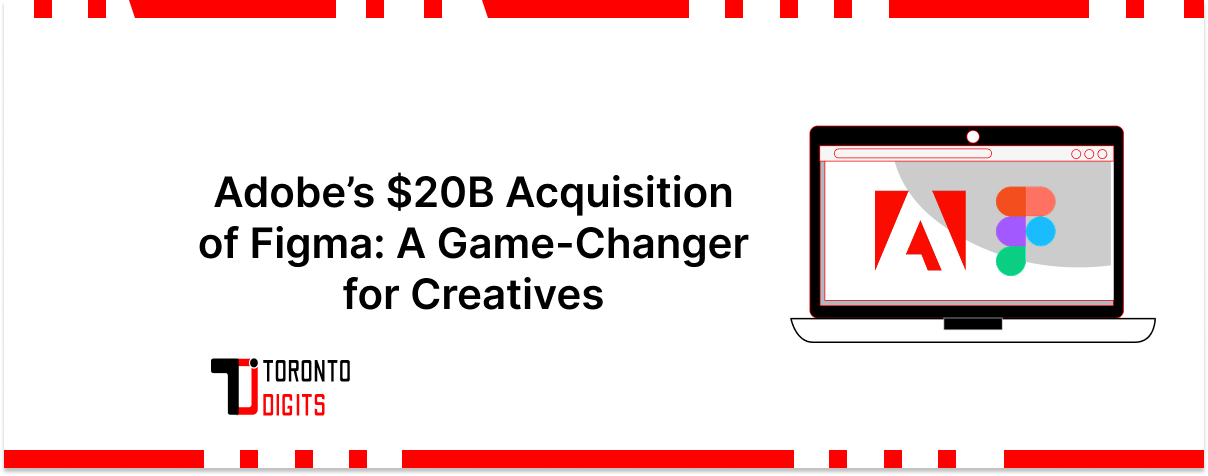Picture this: Adobe, the titan behind Photoshop and Illustrator, attempts to acquire Figma, the fast-rising platform revolutionizing UI/UX with Figma as a top-tier design tools alternative. In September 2022, Adobe announced its $20 billion bid to bring Figma under its wing, a deal that promised to reshape the future of design software. But in a dramatic twist, this corporate marriage collapsed under the weight of antitrust concerns, leaving the design world buzzing and both companies wondering what’s next.
Figma’s Meteoric Rise: A Cloud-Based Game Changer
Figma burst onto the scene in 2016, offering designers an innovative, cloud-based platform with real-time collaboration. Unlike Adobe’s desktop-dominated tools, Figma allowed teams to work together seamlessly, regardless of location. It quickly became the darling of companies like Google, Airbnb, and Microsoft, especially for fast-paced product teams. As Figma encouraged Figma + dev synergy, developers and designers began collaborating seamlessly, removing silos and accelerating product delivery. While Adobe tried to catch up, Figma was winning the hearts of a new generation of designers.
Why Adobe Wanted Figma
Faced with Figma’s skyrocketing popularity, Adobe saw the writing on the wall. Figma wasn’t just another tool—it was the design tools alternative ushering in the next phase of modern web design. With its intuitive interface, real-time collaboration, and cloud-first infrastructure, Figma had everything today’s digital teams needed. For Adobe, the acquisition was not just about neutralizing a rival; it was about catching up to a future already in motion.
Designers using Figma often draw inspiration from themes inspired by great UI, using the platform not only to prototype but also to build complete design systems that translate beautifully into code
The Antitrust Avalanche
But regulators weren’t convinced. Antitrust authorities in the EU and UK quickly raised red flags. Here’s why:
-
- Monopoly Concerns: Adobe already had a strong hold on the design market. Swallowing up Figma, its fastest-growing competitor, would cement an unfair advantage.
-
- Stifling Innovation: With Figma out of the picture, Adobe would face less pressure to innovate, potentially leading to higher prices and stagnation in the market.
-
- Less Choice for Designers: A merger would reduce competition, leaving designers with fewer options and higher costs.
The Deal Crumbles
By December 2023, after months of back-and-forth, Adobe and Figma threw in the towel. The deal, once seen as a strategic masterstroke, unraveled. For Adobe, it was a blow to its ambitions of dominating the cloud-based design space. For Figma, it was a missed opportunity to scale with Adobe’s vast resources. But in the end, regulators believed the risks of market domination outweighed the benefits.
What’s Next for Adobe and Figma?
With the deal dead, both companies face new challenges. Adobe must find other ways to compete in the cloud-driven future of design, while Figma continues to innovate independently. And for the tech world, this is a signal: regulators are more willing than ever to challenge Big Tech, and future acquisitions will face intense scrutiny.
FAQs:
- Why did Adobe want to buy Figma?
Figma’s cloud-based design platform was a major threat to Adobe’s traditional software, and Adobe hoped the acquisition would help it stay competitive in a shifting market.
- Why was the deal blocked?
Regulators worried that the merger would give Adobe too much control over the design software market, stifling innovation and reducing consumer choices.
- What does the failed deal mean for the industry?
This failed merger highlights increasing regulatory scrutiny, signaling that Big Tech acquisitions may face even tougher barriers in the future.
Conclusion:
The collapse of Adobe’s attempt to acquire Figma highlights a turning point in the tech world, signaling heightened regulatory scrutiny on Big Tech mergers. While Adobe faces the challenge of competing in an increasingly cloud-driven market, Figma continues to innovate independently, solidifying its position as a leader in collaborative design. This failed deal serves as a reminder that moving forward, regulators are more focused on maintaining competition and protecting innovation, ensuring that no single player holds too much power in the evolving design landscape.
With powerful UI/UX with Figma workflows, community-driven templates, and continued focus on Figma + dev synergy, Figma remains more than just a tool—it’s a movement.
Author
Ahmad Raza

